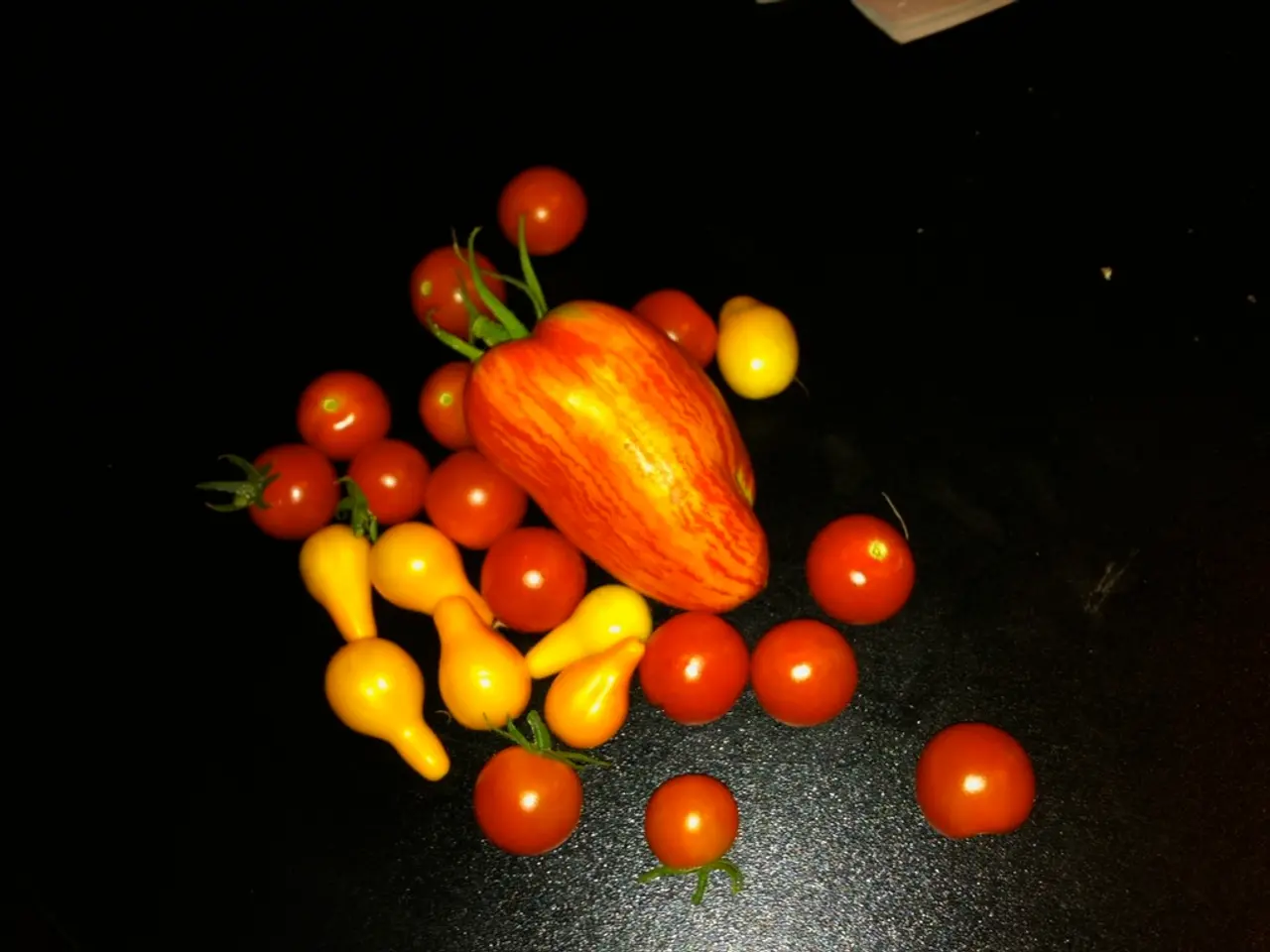Troubleshooting garden fruity disasters: shielding produce from dampness in August
In Minnesota's lush gardens, the growth of various fruits such as apples, plums, grapes, and raspberries is under constant threat from a host of fungal and bacterial diseases. To ensure a bountiful harvest, gardeners must employ a combination of strategies, including cultural practices, resistant varieties, and timely fungicide applications.
For starters, choosing disease-resistant plant varieties is crucial. These varieties help reduce the host's susceptibility, breaking the "disease triangle" (host, pathogen, environment) necessary for infection.
Pruning and destroying infected plant parts also play a significant role. Removing black knot galls on plums and pruning out fire blight strikes can reduce the spread of these diseases. Good sanitation is equally important, with fallen leaves and fruit being cleaned to prevent overwintering of pathogens causing apple scab, brown rot, and grape black rot.
Improving air circulation within orchards and gardens is another effective method. Proper spacing and pruning can help reduce leaf wetness periods critical for diseases like powdery mildew, downy mildew, and gray mold.
Fungicides, when used according to local extension guidelines, can be a valuable tool in the fight against these diseases. Common fungicides control rots, spots, rusts, mildew, and molds on fruit crops. For example, fungicides containing captan, myclobutanil, or sulfur can help combat apple scab and powdery mildew, while copper-based or streptomycin sprays are effective against fire blight. Specific fungicides are also available for downy mildew and Botrytis (gray mold) on grapes and raspberries.
Avoiding overhead watering in the evening can help minimize leaf wetness and pathogen development. Monitoring weather conditions and disease forecasts is also essential to time sprays effectively.
Integrated Pest Management (IPM) approaches, including natural or eco-friendly products, can supplement control while preserving beneficial insects.
In the end, the best control strategy combines sanitation, resistant cultivars, cultural practices, and carefully timed fungicide use based on local disease pressure in Minnesota. Local extension services, such as the University of Minnesota Extension, provide specific treatment recommendations and spraying schedules adapted to Minnesota’s climate and diseases.
Late leaf rust, for instance, dots foliage and fruit with bright yellow spores, rendering berries unfit to eat. Fire blight is a more dramatic and damaging disease in apple and pear orchards, scorching shoots and leaving them looking burned. Powdery mildew coats leaves and berries in white fuzz, while gray mold (Botrytis) is a problem for grapes as clusters ripen, softening fruit and complicating harvests. Black rot is a problem for grapes, turning fruit into hard, shriveled mummies and dotting leaves with blotches. Brown rot is a problem for plums, appearing as a fuzzy, tan mold on ripening fruit after damp days.
Vigilance is crucial in a season with high moisture and fruit hanging low. Good hygiene practices, such as removing fallen fruit and damaged leaves, can help break disease cycles. Healthy fruit doesn't just happen, it's watched over.
For more information, contact Robin Trott, our website educator, at [email protected] or 320-762-3890.
Maintaining a healthy home-and-garden lifestyle involves choosing disease-resistant plant varieties, such as those resistant to apple scab, to break the "disease triangle" and reduce the host's susceptibility. Furthermore, practicing good sanitation, like removing fallen leaves, can prevent overwintering of pathogens causing apple scab, brown rot, and grape black rot.



